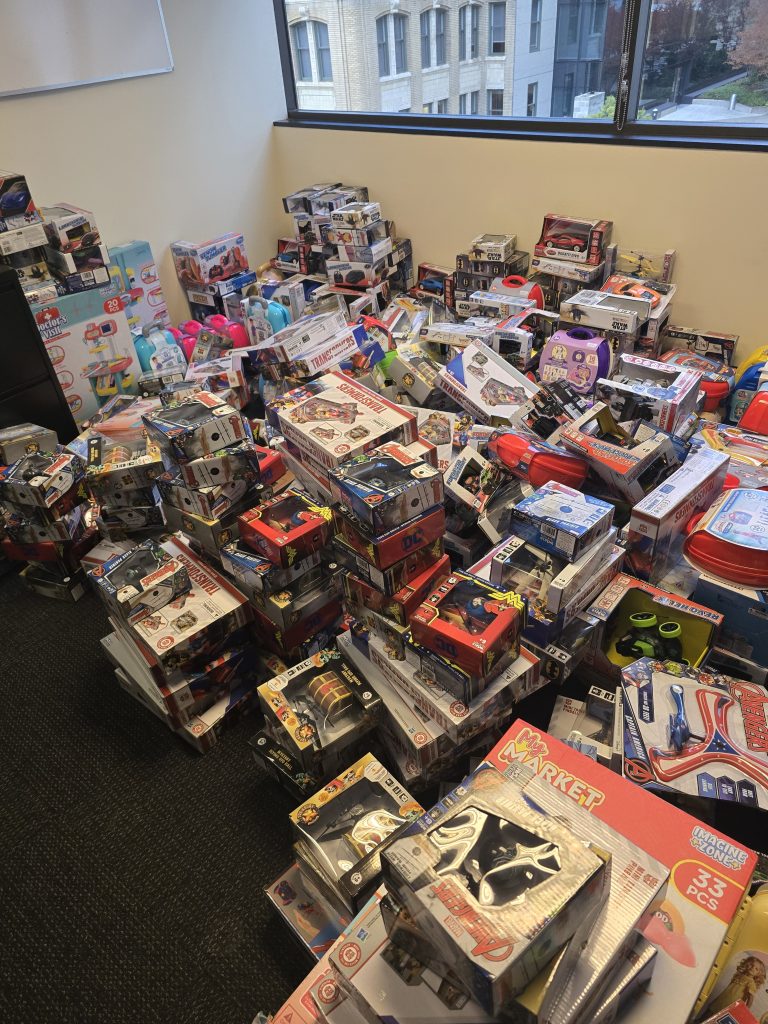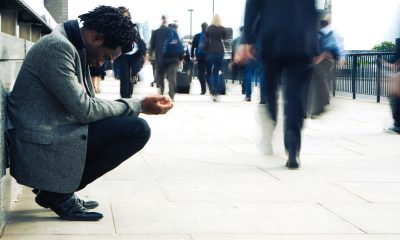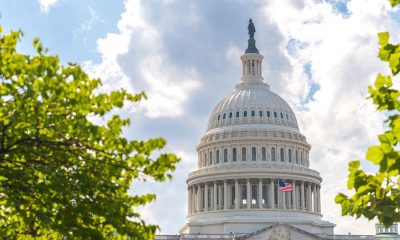Activism
Juneteenth and the Asian American Hate Crime of Vincent Chin
On Juneteenth, there was a lesson for everyone in America when pro-slavery forces couldn’t prevent all of the U.S. from getting the truth. Never give up hope. The truth does win out. That’s why Juneteenth is as close as Asian Americans get to a national holiday commemorating the fight against anti-Asian American violence.

By Emil Guillermo
On Juneteenth, there was a lesson for everyone in America when pro-slavery forces couldn’t prevent all of the U.S. from getting the truth. Never give up hope. The truth does win out.
That’s why Juneteenth is as close as Asian Americans get to a national holiday commemorating the fight against anti-Asian American violence.
I’m not taking anything away from Juneteenth.
I’m adding to it.
You’ve got to admit it’s a strange holiday.
To be true to the spirit of Juneteenth, maybe we should celebrate it not on June 19, but maybe on the 29th.
Or just put it off for three years.
That would adequately mock what actually happened. The Emancipation Proclamation, announced on Sept. 22, 1862, was the beginning of the end slavery when it went into effect 100 days later on Jan. 1, 1863.
But no one told the slaves in Texas until June 19, 1865— two-and-a-half years later.
Paperwork error? Slow wi-fi? Whites were so reluctant to give up the immoral activity of slavery in Texas they gaslighted the Emancipation Proclamation.
I remember hearing about Juneteenth when I lived in the Lone Star state in the ’70s and ’80s. (Not the 1870s, the 1970s and 1980s.)
But isn’t it amazing how the push to make it a national holiday didn’t succeed until 2021? 156 years after 1865.
And even when the holiday was announced, most people still happily lived in ignorance. A Gallup survey found that more than 60% of Americans know “nothing at all” or only “a little bit” about Juneteenth.
What you need to know is that 14 House Republicans voted against the holiday in 2021. For the most part, it’s the same group mucking things up for current House Speaker Kevin McCarthy, who deserves to be mucked up, but for other reasons, not Juneteenth.
And so, for the record, this is the original Congressional Juneteenth Hall of Shame: the Republicans who voted against the federal holiday, which leaves them looking like pro-slavery Republicans
Mo Brooks (AL), Andy Biggs (AZ), Andrew Clyde (GA), Scott DesJarlais (TN), Paul Gosar (AZ), Ronny Jackson (TX), Doug LaMalfa (CA), Thomas Massie (KY), Tom McClintock (CA), Ralph Norman (NC), Mike Rogers (AL), Matt Rosendale (MT), Chip Roy (TX), Tom Tiffany (WI).
These are the same folks who want to stop the teaching of U.S. history claiming it’s “critical race theory.” Of course, It’s nothing of the sort. The holiday simply makes us appreciate that truth and justice eventually do win out.
The good forces have worked overtime to bend that arc of justice since Juneteenth.
That’s why it’s a federal holiday and a day off for many, a reminder to stay vigilant forever.
THE VINCENT CHIN COINCIDENCE
So, we respect Juneteenth, but one particular coincidence of justice delayed must be pointed out that took place on June 19, 1982.
That’s when Vincent Chin, attending his own bachelor party, crossed paths with Ronald Ebens in a strip club in Detroit.
Ebens, a white auto worker in an industry under siege by Japanese imports, saw Chin, and his brain must have registered “Japanese,” even though Chin was Chinese American.
I asked Ebens about this in 2012 and he denies the racial subtext of the incident: “It had nothing to do with the auto industry or Asians or anything else. Never did, never will. I could have cared less about that. That’s the biggest fallacy of the whole thing.”
Really? Chin’s friends, who were there, testified to the contrary.
Ebens may have told me all that to lessen the racial aspect. But he couldn’t deny the most important fact.
After leaving the strip club, he hunted down Chin, found him, and then swung the bat at Chin’s head resulting in his death.
Now 41 years after, Ebens has never served time for the murder.
Nor has Ebens – ordered to pay $1.5 million to the Chin family in a wrongful death settlement–ever paid his debt to the Chin family.
It’s justice denied and delayed for the Chin family.
And Ebens knows he’s at fault for all of it.
“I’m as much to blame,” he admitted to me about Chin’s death. “I should’ve been smart enough to just call it a day. After [Chin and his friends] started to disperse, it was time to get in the car and go home.”
But he didn’t.
Ebens and his stepson, Michael Nitz, got to Chin in that McDonalds parking lot, and as Nitz stood behind Chin, Ebens swung the bat and delivered the fatal blow.
“I went over that a hundred, maybe a thousand times in my mind the last 30 years,” Ebens told me in 2012. “It doesn’t make any sense of any kind that I would swing a bat at his head when my stepson is right behind him. That makes no sense at all.”
The murder doesn’t make sense. Nor does the application of justice, which has only benefitted Chin’s killer.
Chin was in a coma at the Henry Ford Hospital on June 19th, the 20th, the 21st, the 22nd, and then on the 23rd, he didn’t wake up.
But an entire generation of Asian Americans did.
For those born in the Civil Rights Era, Chin was the call to social justice, an awakening. It was just the first wave.
Since then, the Asian American population has grown to more than 23 million people. And now, a new generation is discovering the impact and the importance of the Chin case, at a time when hate crimes against Asian Americans have exploded.
What we learn is our solidarity and common ground with others in America’s BIPOC communities. The most famous hate crime in Asian American history is connected to the very day, Juneteenth. It’s a sign.
In cases of justice denied and delayed, Juneteenth gives us hope.
Emil Guillermo is a veteran Bay Area journalist and commentator. He does a reality talk show on www.amok.com
Activism
Oakland Post: Week of December 24 – 30, 2025
The printed Weekly Edition of the Oakland Post: Week of – December 24 – 30, 2025

To enlarge your view of this issue, use the slider, magnifying glass icon or full page icon in the lower right corner of the browser window.
Activism
Lu Lu’s House is Not Just Toying Around with the Community
Wilson and Lambert will be partnering with Mayor Barbara Lee on a toy giveaway on Dec. 20. Young people, like Dremont Wilkes, age 15, will help give away toys and encourage young people to stay in school and out of trouble. Wilkes wants to go to college and become a specialist in financial aid. Sports agent Aaron Goodwin has committed to giving all eight young people from Lu Lu’s House a fully paid free ride to college, provided they keep a 3.0 grade point average and continue the program. Lu Lu’s House is not toying around.

Special to the Post
Lu Lu’s House is a 501c3 organization based in Oakland, founded by Mr. Zirl Wilson and Mr. Tracy Lambert, both previously incarcerated. After their release from jail, they wanted to change things for the better in the community — and wow, have they done that!
The duo developed housing for previously incarcerated people, calling it “Lu Lu’s House,” after Wilson’s wonderful wife. At a time when many young people were robbing, looting, and involved in shootings, Wilson and Lambert took it upon themselves to risk their lives to engage young gang members and teach them about nonviolence, safety, cleanliness, business, education, and the importance of health and longevity.
Lambert sold hats and T-shirts at the Eastmont Mall and was visited by his friend Wilson. At the mall, they witnessed gangs of young people running into the stores, stealing whatever they could get their hands on and then rushing out. Wilson tried to stop them after numerous robberies and finally called the police, who Wilson said, “did not respond.” Having been incarcerated previously, they realized that if the young people were allowed to continue to rob the stores, they could receive multiple criminal counts, which would take their case from misdemeanors to felonies, resulting in incarceration.

Lu Lu’s House traveled to Los Angeles and obtained more than 500 toys
for a Dec. 20 giveaway in partnership with Oakland Mayor Barbara
Lee. Courtesy Oakland Private Industry,
Wilson took it upon himself to follow the young people home and when he arrived at their subsidized homes, he realized the importance of trying to save the young people from violence, drug addiction, lack of self-worth, and incarceration — as well as their families from losing subsidized housing. Lambert and Wilson explained to the young men and women, ages 13-17, that there were positive options which might allow them to make money legally and stay out of jail. Wilson and Lambert decided to teach them how to wash cars and they opened a car wash in East Oakland. Oakland’s Initiative, “Keep the town clean,” involved the young people from Lu Lu’s House participating in more than eight cleanup sessions throughout Oakland. To assist with their infrastructure, Lu Lu’s House has partnered with Oakland’s Private Industry Council.
For the Christmas season, Lu Lu’s House and reformed young people (who were previously robbed) will continue to give back.
Lu Lu’s House traveled to Los Angeles and obtained more than 500 toys.
Wilson and Lambert will be partnering with Mayor Barbara Lee on a toy giveaway on Dec. 20. Young people, like Dremont Wilkes, age 15, will help give away toys and encourage young people to stay in school and out of trouble. Wilkes wants to go to college and become a specialist in financial aid. Sports agent Aaron Goodwin has committed to giving all eight young people from Lu Lu’s House a fully paid free ride to college, provided they keep a 3.0 grade point average and continue the program. Lu Lu’s House is not toying around.
Activism
Desmond Gumbs — Visionary Founder, Mentor, and Builder of Opportunity
Gumbs’ coaching and leadership journey spans from Bishop O’Dowd High School, Oakland High School, Stellar Prep High School. Over the decades, hundreds of his students have gone on to college, earning academic and athletic scholarships and developing life skills that extend well beyond sports.

Special to the Post
For more than 25 years, Desmond Gumbs has been a cornerstone of Bay Area education and athletics — not simply as a coach, but as a mentor, founder, and architect of opportunity. While recent media narratives have focused narrowly on challenges, they fail to capture the far more important truth: Gumbs’ life’s work has been dedicated to building pathways to college, character, and long-term success for hundreds of young people.
A Career Defined by Impact
Gumbs’ coaching and leadership journey spans from Bishop O’Dowd High School, Oakland High School, Stellar Prep High School. Over the decades, hundreds of his students have gone on to college, earning academic and athletic scholarships and developing life skills that extend well beyond sports.
One of his most enduring contributions is his role as founder of Stellar Prep High School, a non-traditional, mission-driven institution created to serve students who needed additional structure, belief, and opportunity. Through Stellar Prep numerous students have advanced to college — many with scholarships — demonstrating Gumbs’ deep commitment to education as the foundation for athletic and personal success.

NCAA football history was made this year when Head Coach from
Mississippi Valley State, Terrell Buckley and Head Coach Desmond
Gumbs both had starting kickers that were women. This picture was
taken after the game.
A Personal Testament to the Mission: Addison Gumbs
Perhaps no example better reflects Desmond Gumbs’ philosophy than the journey of his son, Addison Gumbs. Addison became an Army All-American, one of the highest honors in high school football — and notably, the last Army All-Americans produced by the Bay Area, alongside Najee Harris.
Both young men went on to compete at the highest levels of college football — Addison Gumbs at the University of Oklahoma, and Najee Harris at the University of Alabama — representing the Bay Area on a national level.
Building Lincoln University Athletics From the Ground Up
In 2021, Gumbs accepted one of the most difficult challenges in college athletics: launching an entire athletics department at Lincoln University in Oakland from scratch. With no established infrastructure, limited facilities, and eventually the loss of key financial aid resources, he nonetheless built opportunities where none existed.
Under his leadership, Lincoln University introduced:
- Football
- Men’s and Women’s Basketball
- Men’s and Women’s Soccer
Operating as an independent program with no capital and no conference safety net, Gumbs was forced to innovate — finding ways to sustain teams, schedule competition, and keep student-athletes enrolled and progressing toward degrees. The work was never about comfort; it was about access.
Voices That Reflect His Impact
Desmond Gumbs’ philosophy has been consistently reflected in his own published words:
- “if you have an idea, you’re 75% there the remaining 25% is actually doing it.”
- “This generation doesn’t respect the title — they respect the person.”
- “Greatness is a habit, not a moment.”
Former players and community members have echoed similar sentiments in public commentary, crediting Gumbs with teaching them leadership, accountability, confidence, and belief in themselves — lessons that outlast any single season.
Context Matters More Than Headlines
Recent articles critical of Lincoln University athletics focus on logistical and financial hardships while ignoring the reality of building a new program with limited resources in one of the most expensive regions in the country. Such narratives are ultimately harmful and incomplete, failing to recognize the courage it takes to create opportunity instead of walking away when conditions are difficult.
The real story is not about early struggles — it is about vision, resilience, and service.
A Legacy That Endures
From founding Stellar PREP High School, to sending hundreds of students to college, to producing elite athletes like Addison Gumbs, to launching Lincoln University athletics, Desmond Gumbs’ legacy is one of belief in young people and relentless commitment to opportunity.
His work cannot be reduced to headlines or records. It lives on in degrees earned, scholarships secured, leaders developed, and futures changed — across the Bay Area and beyond.
-

 #NNPA BlackPress4 weeks ago
#NNPA BlackPress4 weeks agoLIHEAP Funds Released After Weeks of Delay as States and the District Rush to Protect Households from the Cold
-

 Activism4 weeks ago
Activism4 weeks agoOakland Post: Week of November 26 – December 2, 2025
-

 Alameda County3 weeks ago
Alameda County3 weeks agoSeth Curry Makes Impressive Debut with the Golden State Warriors
-

 #NNPA BlackPress4 weeks ago
#NNPA BlackPress4 weeks agoSeven Steps to Help Your Child Build Meaningful Connections
-

 #NNPA BlackPress4 weeks ago
#NNPA BlackPress4 weeks agoSeven Steps to Help Your Child Build Meaningful Connections
-

 #NNPA BlackPress4 weeks ago
#NNPA BlackPress4 weeks agoTrinidad and Tobago – Prime Minister Confirms U.S. Marines Working on Tobago Radar System
-

 #NNPA BlackPress4 weeks ago
#NNPA BlackPress4 weeks agoThanksgiving Celebrated Across the Tri-State
-

 #NNPA BlackPress4 weeks ago
#NNPA BlackPress4 weeks agoTeens Reject Today’s News as Trump Intensifies His Assault on the Press






















































